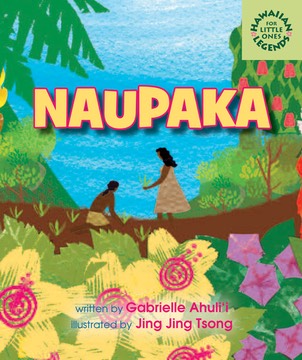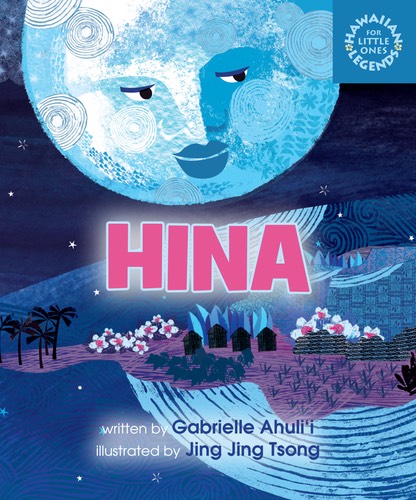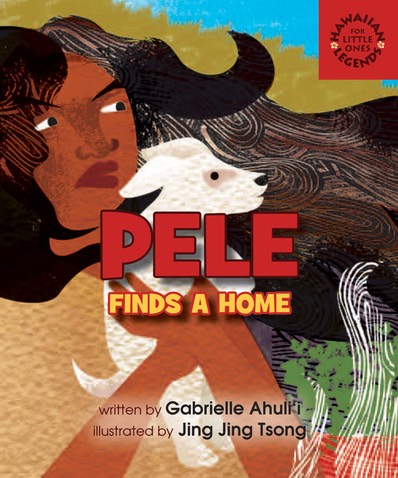Preserving an Ancient Tradition:
Why I Write Books About Hawaiian Stories and Culture for Children
by Gabrielle Ahuliʻi
The process of writing my own Hawaiian children’s books was an eye-opening one for me. The tradition of Hawaiian storytelling, like Hawaiian culture itself, is vast and dynamic — but, as I was conducting research, I realized just how challenging it can be to find accessible sources of Hawaiian storytelling for children. I grew up hearing these stories as a child from family members and teachers in school. Growing up as a mixed-race Hawaiian in Hawaii, I connected deeply to the stories and enjoyed the time we spent in school learning them. So revisiting them as an adult was a fascinating process. I saw that many of the legends and stories I encountered in books were written in old-fashioned language, with complicated vocabulary and story structure. While none of this is inherently bad, it can be challenging for many readers (particularly younger readers or reluctant readers) to draw meaning from stories if they are particularly complex or difficult to understand.
After reading the texts and starting to work on my own books, I began to understand what a privilege it is for children of Hawaiian descent to learn their culture and language. And yet, I was also struck by the thought that this shouldn’t be a privilege — this should be the norm. Exposure to stories and legends of cultural significance in early childhood can give children a deep sense of respect for the place they live and an opportunity to engage with the culture around them. Access to and engagement with Native Hawaiian stories empowers children of Native Hawaiian descent by arming them with knowledge to help navigate their world as Indigenous people. Knowing and internalizing one’s own identity allows a person to traverse cultural spaces with greater ease. If a child understands the world around them from a cultural perspective, they are not only able to engage more deeply with their culture, but to create more meaningful connection across cultures as well.
Non-Native Hawaiian children benefit from exposure to these stories too; creation stories and origin stories of physical spaces in the place where they live give all children a deep sense of place and an understanding of the unique nature of the place that they inhabit. Learning cultural context is valuable for visitors to Hawaii as well — armed with a holistic and culturally appropriate knowledge of a place, they can not only take that knowledge back with them and educate others, but develop a deeper understanding and appreciation for the cultures of their own home.
Children in Hawaii are fortunate to be exposed to a staggering array of natural resources and diverse biomes, and the stories and legends they learn can help them to appreciate the uniqueness of this place. While they learn about the formation of the islands (volcanoes, hot spots, plate tectonics, etc.), it enriches their experience to also learn about the Hawaiian legend of the fire goddess Pele, who still resides in Kīlauea and whose power can still be witnessed at Halemaʻumaʻu. While learning about food and resource sustainability, it can be beneficial for students to learn about Hāloa, Hawaiians’ first ancestor, whose existence is represented by the kalo plant, a staple food of the Hawaiian people for centuries. A holistic learning experience, supported by the use of traditional legends and stories, can create a richer and deeper experience for young readers. It allows kids to internalize and take ownership of their culture (or the culture of the place where they live), and carry it with them wherever they may go.
Ancient Hawaiian culture and society were oral traditions. Our histories, genealogies, and ways of knowing and believing were transmitted to us through stories and chants. The idea of preserving our stories for perpetuity is not a new one — it is an idea that has been instilled in us since time immemorial. In contemporary times, with modern technology, our stories have the reach and exposure that our ancestors could have only dreamed about. As authors, we are given an incredible opportunity to cultivate in Native children a sense of stewardship and ownership in their own culture, and we can provide a platform for children to learn and internalize their traditions, and pass them on to future generations. I feel deeply honored to have been given this platform to share my culture with such a wide audience, and I can only hope that my elders look at my tellings with pride.
-
Books by Gabrielle Ahuli’i
-
Pele Finds a Home
Preorder from:




